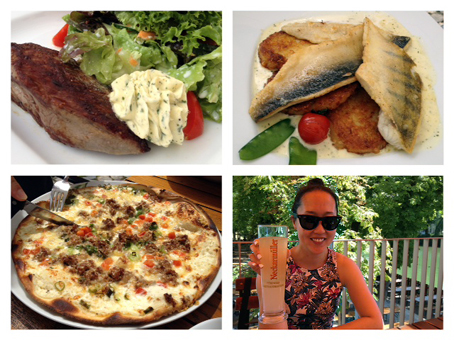I've had lumps come and go since I was 20. They are fibroademonas which are not cancerous. In Asian women, these type of lumps are common. Because of my age and no family history of breast cancer, I have annual ultrasounds to monitor them.
My largest lump grew 2mm this year and is painful. I've dismissed the discomfort but I still worry it could be cancer.
My consultant said that because I'm over 35, it's standard practice to have lumps biopsied to be 100% sure they are not malignant.
I'm afraid of anything intrusive but the pain can be so intense it shoots through my arm. It's hard to believe that anything benign can cause it so I reluctantly agreed.
I took a gung-ho approach to the needle biopsy which I've dreaded for years . I arranged for it to be done straight away.
They found two new lumps under an ultrasound. Since all lumps have the same appearance, they only biopsied the largest. I was told that if this lump was a fibroademona, the others would be too.
Although I can handle some pain, I was sensitive to what was happening and it set my anxiety levels off. Logically after the anaesthetic, you shouldn't be concerned.
The consultant worked with the ultrasound to find the right spots to jab. He said he can feel my heart pounding under the scanner.
After the anaesthetic, the most painful part, I had two syringes take in fluid and tissue. There is a loud pop when they're full. I didn't dare to look or ask questions when I felt a warm liquid dribble down my chest. The consultant assured me that everything was fine. The whole procedure took 10 minutes.
The sample taken was about 30ml of clear yellow fluid and tiny bit of tissue. It was not as gruesome as I imagined.
A nurse pressed down the area with tissue and applied bandages. She told me to keep it dry and not to do any heavy lifting.
"Can I still do Zumba tomorrow?" I asked meekly. They said yes.
My nerves were rattled but they calmed down as I left the hospital. The anaesthetic wore off. I was sore but glad it's over.
As the doctor warned, I bruised and the area was swollen after two weeks. It wasn't too uncomfortable.
Thankfully I was confirmed that the lump was a fibroademona. It might still grow. Because of my age it's not likely to disappear like the ones I had when I was younger.
The consultant said no further monitoring is necessary but I still have to check for new lumps.
I was grateful for the weight being lifted off my chest (so to speak!). My ta-tas are cancer free and the unpleasantness endured was completely worth the confirmation.
As the doctor warned, I bruised and the area was swollen after two weeks. It wasn't too uncomfortable.
Thankfully I was confirmed that the lump was a fibroademona. It might still grow. Because of my age it's not likely to disappear like the ones I had when I was younger.
The consultant said no further monitoring is necessary but I still have to check for new lumps.
I was grateful for the weight being lifted off my chest (so to speak!). My ta-tas are cancer free and the unpleasantness endured was completely worth the confirmation.
If I had to do it again, I wouldn't be such a 'fraidy cat.

